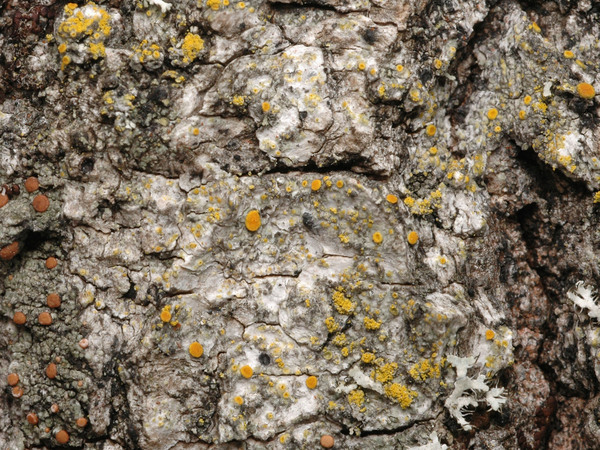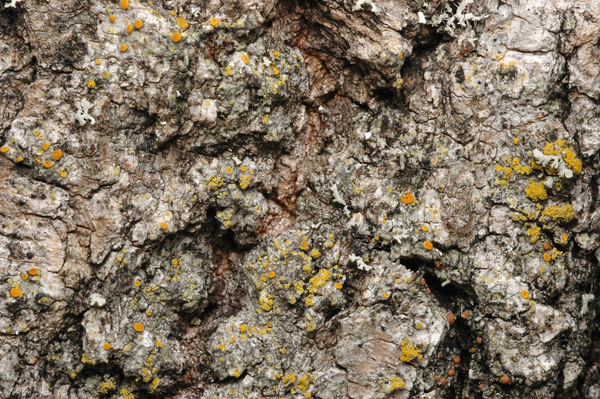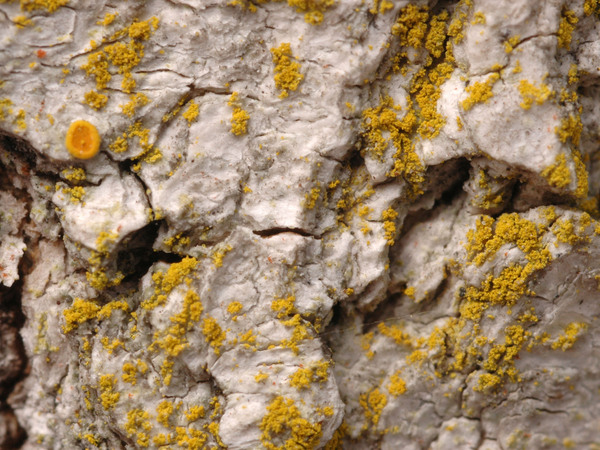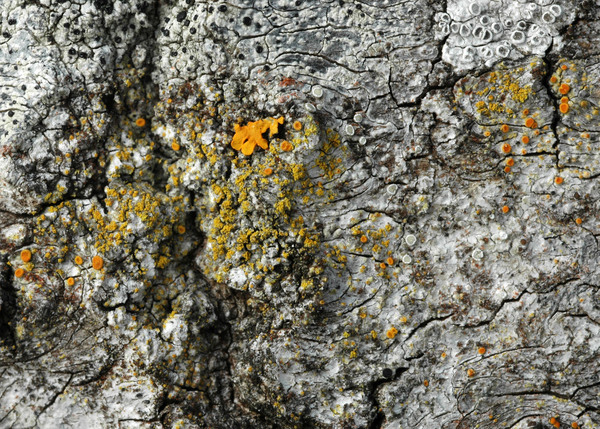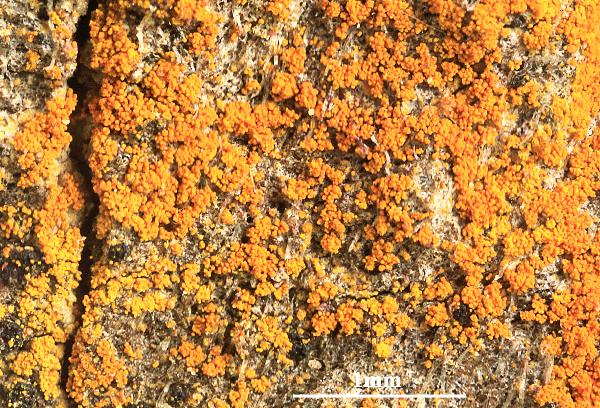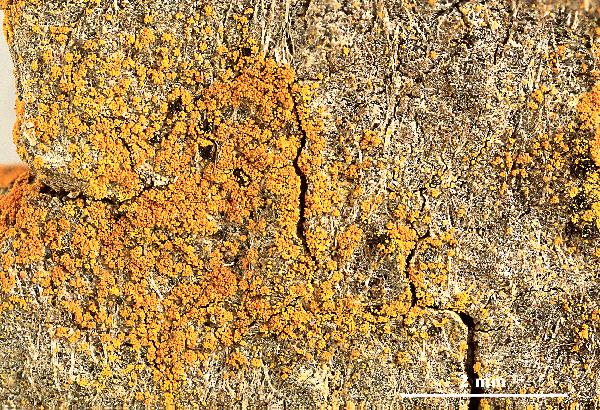Solitaria chrysophthalma (Degel.) Arup, Søchting & Frödén
Nord. J. Bot., 31: 55, 2013. Basionym: Caloplaca chrysophthalma Degel. - K. Sv.-Akad. Skr. Natursk., 46: 56, 1944.
Synonyms:
Distribution: C - Umb (Ravera & al. 2006, 2006b), Laz, Sar. S - Camp (Brunialti & al. 2013, Ravera & Brunialti 2013), Pugl (Nimis & Tretiach 1999), Si (Ravera & al. 2024).
Description: Thallus crustose, thinly episubstratic, pale grey or yellow-grey, continuous or of dispersed areoles, up to 100 µm thick, sorediate. Soralia well-delimited, round to irregular, 0.2-0.5(-0.8) mm across, bright greenish yellow to yellow-orange, the soredia 21-35 µm thick. Apothecia rather rare, biatorine/zeorine, 0.3-0.7 mm across, with a dark orange to orange, mostly flat disc, a concolorous or somewhat paler proper margin and an often sorediate thalline margin which is usually hidden on lower side of the proper margin. Proper exciple of long and narrow, slightly irregularly arranged hyphae; epithecium brownish yellow, K+ purple-red; hymenium colourless, 55-75(-85) µm high; paraphyses simple or sparingly branched, the apical cells not or only slightly swollen; hypothecium colourless. Asci 8-spored, clavate, functionally unitunicate, apically thickened with a broad internal beak, the inner part of apex and external cap I+ blue, Teloschistes-type. Ascospores 2-celled, polarilocular, hyaline, ellipsoid, (10-)12-17(-20) x (5.5-)7-8.5(-10) µm, the equatorial thickening (“septum”) (4-)5-7(-8.5) µm (1/3-1/4 of spore length). Pycnidia immersed, with an orange ostiolar region. Conidia bacilliform, c. 3 x 1 µm. Photobiont chlorococcoid. Spot tests: soralia, apothecia and sometimes also thallus K+ purple-red, C-, KC-, P-. Chemistry: soralia, apothecia and sometimes also thallus with parietin (major), fallacinal, emodin, teloschistin and parietinic acid (minor), corresponding with chemosyndrome A of Søchting (1997). Note: a rare mild-temperate lichen found on base-rich bark of isolated trees (e.g. of Populus, Juglans, Fraxinus). It is included in the Italian red list of epiphytic lichens as “Vulnerable” (Nascimbene & al. 2013c). Earlier records from Northern Italy (Nimis 1993: 160) are due to misidentifications.
Growth form: Crustose
Substrata: bark
Photobiont: green algae other than Trentepohlia
Reproductive strategy: mainly asexual, by soredia, or soredia-like structures (e.g. blastidia)
Most common in areas with a humid-warm climate (e.g. most of Tyrrenian Italy)
Commonnes-rarity: (info)
Alpine belt: absent
Subalpine belt: absent
Oromediterranean belt: absent
Montane belt: absent
Submediterranean belt: absent
Padanian area: absent
Humid submediterranean belt: extremely rare
Humid mediterranean belt: extremely rare
Dry mediterranean belt: absent

Predictive model
Herbarium samples
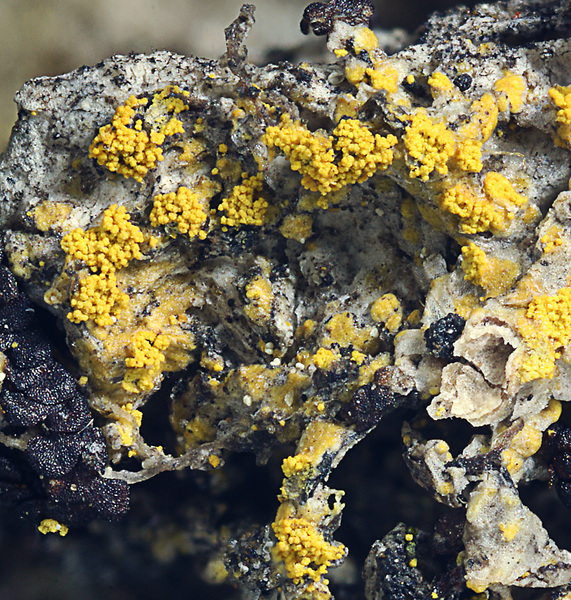

Felix Schumm CC BY-SA 4.0
[16717], USA, Minnesota, Lake County, Superior National Forest, south of Little Isabella River Campground along highway 1, in ash bog with black ash and alder, Sec. 36, T60N, R9W. Leg. C. M. Wetmore (Nr. 64092), 17.09.1989
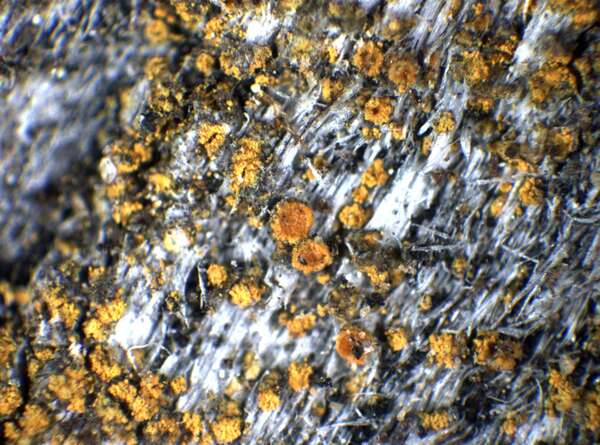

P.L. Nimis; Owner: Department of Life Sciences, University of Trieste
Herbarium: TSB (27278)
2001/11/19
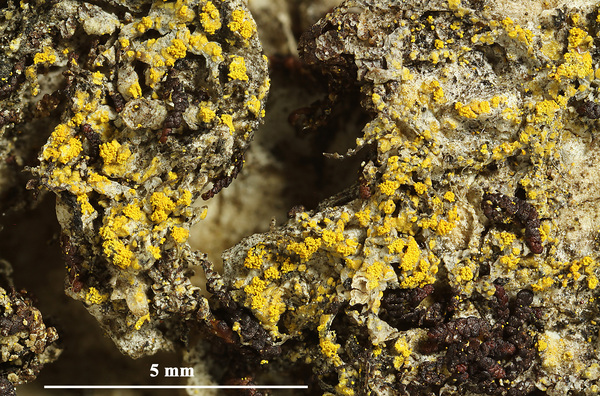

Felix Schumm - CC BY-SA 4.0
[16717], USA, Minnesota, Lake County, Superior National Forest, south of Little Isabella River Campground along highway 1, in ash bog with black ash and alder, Sec. 36, T60N, R9W. Leg. C. M. Wetmore (Nr. 64092), 17.09.1989
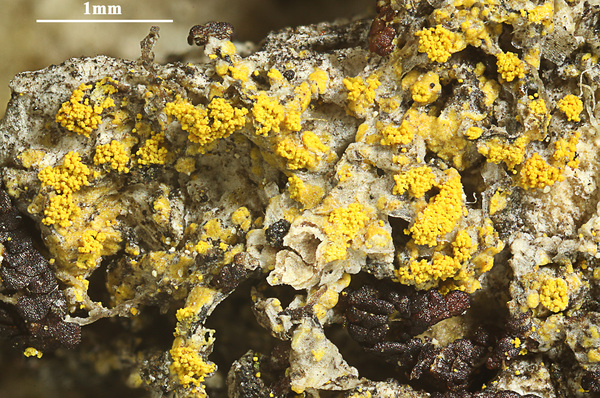

Felix Schumm - CC BY-SA 4.0
[16717], USA, Minnesota, Lake County, Superior National Forest, south of Little Isabella River Campground along highway 1, in ash bog with black ash and alder, Sec. 36, T60N, R9W. Leg. C. M. Wetmore (Nr. 64092), 17.09.1989
Growth form: Crustose
Substrata: bark
Photobiont: green algae other than Trentepohlia
Reproductive strategy: mainly asexual, by soredia, or soredia-like structures (e.g. blastidia)
Most common in areas with a humid-warm climate (e.g. most of Tyrrenian Italy)
Commonnes-rarity: (info)
Alpine belt: absent
Subalpine belt: absent
Oromediterranean belt: absent
Montane belt: absent
Submediterranean belt: absent
Padanian area: absent
Humid submediterranean belt: extremely rare
Humid mediterranean belt: extremely rare
Dry mediterranean belt: absent

Predictive model
| Herbarium samples |


Felix Schumm CC BY-SA 4.0
[16717], USA, Minnesota, Lake County, Superior National Forest, south of Little Isabella River Campground along highway 1, in ash bog with black ash and alder, Sec. 36, T60N, R9W. Leg. C. M. Wetmore (Nr. 64092), 17.09.1989


P.L. Nimis; Owner: Department of Life Sciences, University of Trieste
Herbarium: TSB (27278)
2001/11/19


Felix Schumm - CC BY-SA 4.0
[16717], USA, Minnesota, Lake County, Superior National Forest, south of Little Isabella River Campground along highway 1, in ash bog with black ash and alder, Sec. 36, T60N, R9W. Leg. C. M. Wetmore (Nr. 64092), 17.09.1989


 INDEX FUNGORUM
INDEX FUNGORUM
 GBIF
GBIF
